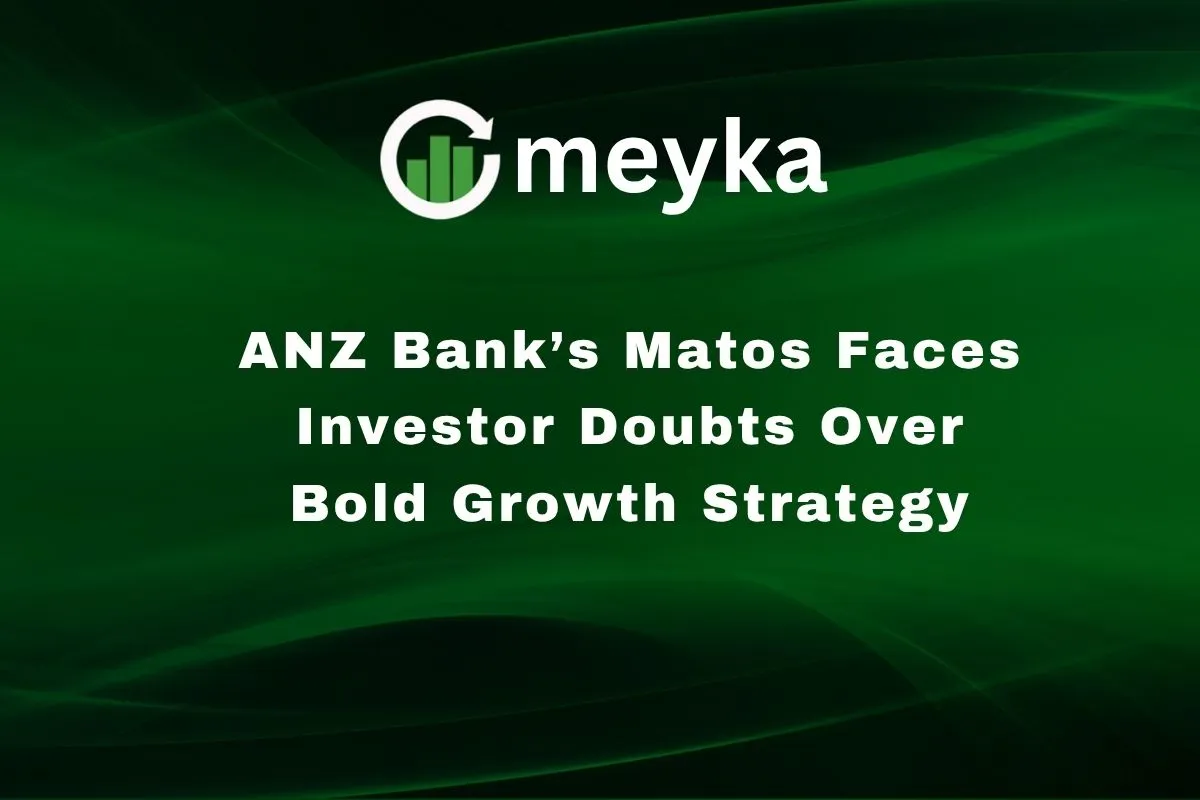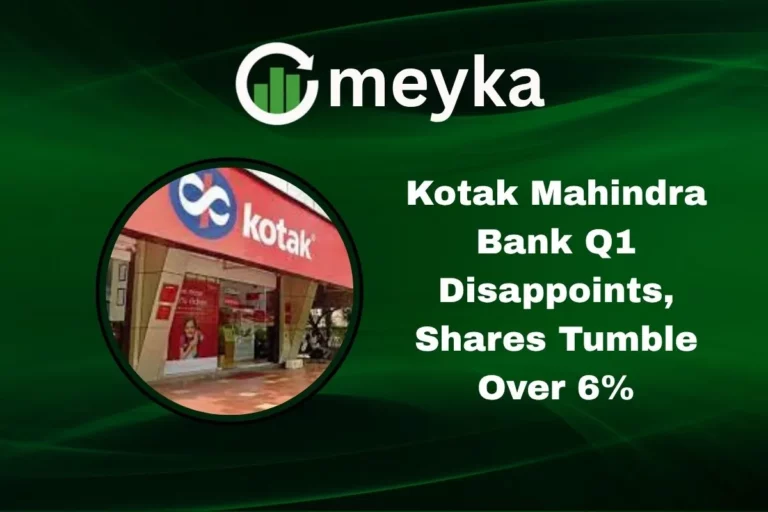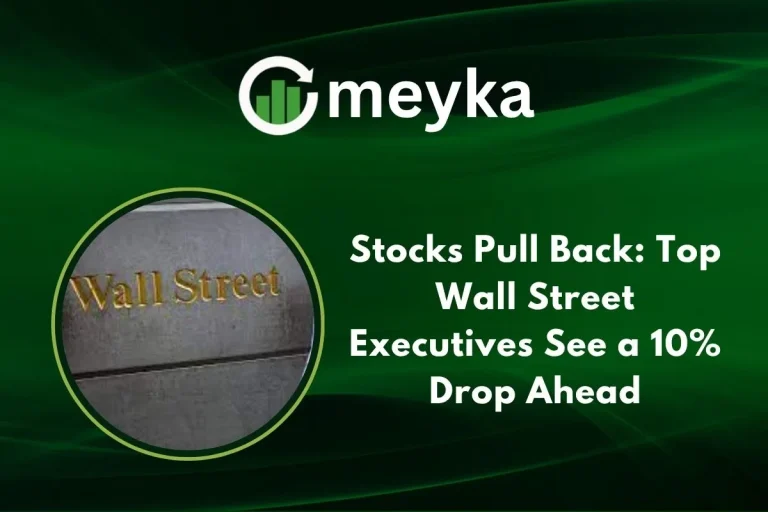ANZ Bank’s Matos Faces Investor Doubts Over Bold Growth Strategy
ANZ Bank has raised eyebrows across financial markets with a sweeping new plan under CEO Nuno Matos. In October 2025, the bank abruptly halted its remaining share buyback of about A$800 million, signaling that it wants to hold onto capital for deeper strategic change. Matos has laid out an ambitious roadmap that combines cost cuts, organizational redesign, and an accelerated digital push. Yet, while the vision is bold, many investors are asking: can ANZ deliver?
We see a mix of optimism and skepticism. Some backers applaud the clarity and urgency. Others warn of execution risks, weakening morale, or overreach. Over the next sections, we will unpack Matos’s approach, the market’s reaction, the challenges ahead, and what key signals to watch.
Who is Matos? Leadership Profile
Nuno Matos assumed the helm at ANZ in May 2025, coming from senior banking roles abroad. He inherits a reputation as a “wartime CEO,” known for taking sharp, decisive steps. His leadership style emphasizes speed, accountability, and cultural reset.
Though new in the role, Matos has already reshuffled parts of the executive team, bringing in experts to lead retail, technology, and risk functions. He is vocal about his belief that ANZ’s existing structure is too complex and that leaner operations will unleash greater growth. That said, some insiders worry whether such a transformational push so soon may stretch institutional capacity.
The Bold Growth Strategy Explained
Matos’s plan is centered around the “ANZ 2030” strategy, a two-phase approach.
In the first phase (2025–2027), ANZ will focus on:
- Organizational simplification, reduce duplication, exit non-core assets, unify systems.
- Cost savings, target ~A$800 million in pre-tax savings via restructures and synergy capture.
- Faster integration of Suncorp Bank, the acquisition’s full synergies are to be realized sooner than planned, with A$500 million in annual savings projected.
- Digital consolidation, roll out the ANZ Plus platform for all retail and small-business customers by 2027, unifying front-end experience.
In the second phase (post-2027), the bank aims to shift from cost focus to growth expansion:
- Revenue acceleration across retail, loans, and business banking
- More investment in customer acquisition and digital products
- Target financial metrics, such as Return on Tangible Equity (ROTE) reaching ~12–13% by 2030
To support this, ANZ announced it would stop its remaining share buyback program and maintain its dividend, freeing up capital for transformation.
Investor Concerns and Market Reaction
Reactions among investors and analysts have been mixed. Some see this as a bold reset; others view it as a high-stakes gamble.
- Market response: After the announcement, ANZ shares jumped ~3.3%, indicating initial investor approval. The bank also outperformed peers during broader market declines.
- Doubts over timing and morale: Critics argue that mass layoffs and rapid change may undermine staff engagement at a critical moment.
- Risk of overreach: Some analysts caution that the costs and risks of integration, system change, and branch rationalization may overwhelm ANZ before it sees returns.
- Regulatory scrutiny and governance concerns: ANZ has been under pressure from regulators over past conduct issues. Some investors worry that adding complexity could reopen vulnerabilities.
Still, there is a contingent backing the overhaul. In fact, some investors are already shifting in favor, implying they believe in Matos’s thesis.
Financial Risks and Challenges
Bold ambitions bring real risks. Here are a few:
- Cost of execution: The restructuring costs, system migrations, and overlap transitions require significant upfront capital. Any delays or overruns will eat into margins.
- Operational and integration risk: The Suncorp merger is complex. Unifying systems, culture, brand, and processes is a tall order.
- Economic headwinds: Rising interest rates, inflation, or weak credit conditions could compress margins or increase defaults.
- Impact on dividends & capital: To fund transformation, ANZ has dropped its buyback. If the plan slips, shareholders may question whether the dividend stability is sustainable.
- Talent and morale: Layoffs, reassignments, and change fatigue may lead to increased staff turnover, especially in critical tech or risk roles.
Supporters’ Perspective: Why the Strategy Could Work
Not all views are negative. Many supporters see real upside if execution holds.
- Clear vision and urgency: Matos doesn’t hide the challenge. He has communicated priorities clearly, which can help rally teams.
- Underleveraged assets: Retail and commercial divisions of ANZ underperformed historically; there is room to improve margins, scale, and distribution.
- Digital advantage: If ANZ can execute a seamless digital front-end, it can reduce operating costs, improve customer retention, and attract younger clients.
- Long-term value creation: Supporters argue that delaying bold change would only deepen structural inefficiencies. They believe the payoff in 5–7 years could be material.
- Early signs of success: Some metrics already reflect positive momentum, the stock rose, and the market responded favorably to the reset.
Industry Context and Competitive Landscape
To understand ANZ’s gamble, we must see it relative to peers and trends.
- Domestic rivals like Commonwealth Bank, NAB, and Westpac are also pushing digital transformation and cost discipline. ANZ is effectively trying to catch up and leapfrog.
- Banking trends: Globally, banks are reducing physical branches, investing in AI, and prioritizing digital platforms over legacy systems. ANZ’s push is aligned with that direction.
- Regulation & capital norms: Australian banks face high capital requirements and strong regulatory oversight. Any misstep could attract supervisory scrutiny. Matos must balance boldness with caution.
Outlook: What Investors Should Watch
We from the market will be watching several key indicators to see if this strategy is tangible or overambitious. Among them:
- Cost savings progress: Whether the A$800 million in cost cuts is delivered on schedule
- Suncorp integration milestones: Migration of systems, branch consolidation, synergy capture
- Digital adoption metrics: How many retail customers are fully migrated to ANZ Plus; platform performance
- Financial metrics: Return on Tangible Equity, cost-to-income ratio, and non-financial risk incidents
- Dividend and capital actions: Whether ANZ maintains its dividend or needs to pull back
- Staff turnover/morale: Reports of talent loss or internal dissatisfaction
If these metrics hold up, confidence may strengthen. If they slip, investors may reassess the risk-reward balance.
Conclusion
ANZ Bank’s shift under Matos is dramatic and high-stakes. The move to halt share buybacks, slash costs, unify platforms, and accelerate merger integration signals a deep conviction that the bank must evolve quickly or lose ground. The boldness is clear.
Yet, in bold moves lies risk. The tightrope is narrow. Success depends on flawless execution, cultural alignment, and external headwinds. Investors are right to question whether the promise will translate into performance.
We will watch closely whether Matos can prove his vision is not just an ambition but a reality. As the next years unfold, ANZ’s fate may rest on this gamble, a strategic bet between transformation and turbulence.
FAQS:
The ANZ bond trading scandal involved accusations that ANZ and other banks tried to influence the market for government bonds. Regulators looked into price manipulation and unfair trading practices.
Shayne Elliott stepped down after several years as CEO, mainly to allow new leadership to guide ANZ’s next phase of growth. It was a planned and structured transition.
ANZ is considered a strong bank because it is well-regulated, financially stable, and offers many services. However, customer opinions vary based on personal experience and expectations.
Disclaimer:
This content is for informational purposes only and is not financial advice. Always conduct your research.






